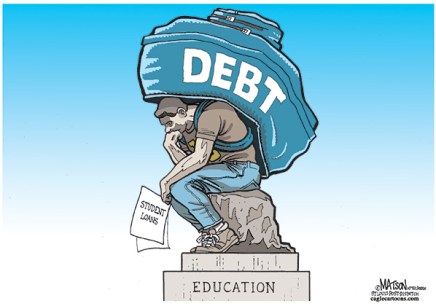Adapt or die: The dangers of retailers hiring old-school C-Level marketing leaders

The days of “status quo” and “incremental improvements” in retail marketing management are long past
Over the weekend, a recruiter for a regional retailer with very inconsistent Yelp and Glassdoor reviews told me the client was, first and foremost, looking for a C-Level marketing professional with “humility” and to “help them build forward by capitalizing on what is already working.” The dictionary tells us the definition of humility is “a modest or low view of one’s own importance; humbleness.” First of all, finding a humble — and effective — senior marketer is already a huge needle-in-a-haystack challenge. Second, does this company truly understand the extremely serious market headwinds now facing it — like something they’ve never encountered before?
The Status Quo is already not working
There are many unhappy customers and employees already commenting on this chain on social media; the latter often mentioning “lower pay than competitors” and the family-owned head office being “disconnected” and “reactive” (as opposed to being proactive, which is needed to survive in current market conditions). And then this comment from a field manager: “Marketing has some pretty cringe-worthy / old-fashioned ideas about how to boost sales.” Yikes. Customer reviews are certainly not glowing on average; customer service apparently varies greatly from location to location and department to department according to Yelp. Any chief marketer would be battling all of this — and perhaps intransigence from the owners who allowed this to occur — even before trying to position and brand the company for long-term success.
This retailer may currently or historically be “leaders in their class and many of their categories,” as this recruiter pointed out, but so were many other retailers at one point in the past few years who have recently shuttered (or downsized) or are close to doing so.
I’m all for having humility as a crucial management skill, but with online sales taking a larger piece of the retail pie every day, this is not the time for being so in the marketplace. Hubris, no. Bold, yes. And quickly. Adapt or die (as Geoffrey Colon writes about in Disruptive Marketing)? Definitely. Because consumers are now driving marketing, and even your brand. What worked yesterday may not work today. Or tomorrow.
The Clear and Present Danger
Somebody is going to eat this chain’s lunch if the status quo, or slight improvements to it, is what they are pursuing. Former juggernauts Sears Canada (dead as of this week) and Toys R Us (in Chapter 11 bankruptcy and set to close 182 locations in 2018) may well be the canaries in the coal mine.
Major chains that declared bankruptcy in 2017 include:
- Sears Canada (liquidated, and its US sibling is sure to follow)
- Danier Leather – Canada (dead)
- The Limited
- Vanity
- HHGregg (all stores have been closed)
- RadioShack
- Gander Mountain
- Payless Shoesource
- Rue21
- Gymboree
- Perfumania
- Vitamin World
Many others are on the edge. According to S&PÂ Global Market Intelligence, these are some at high risk in 2018:
- Bon-Ton (and its regional Bergner’s, Boston Store, Carson’s, Elder-Beerman, Herberger’s, and Younkers brands) – it missed a $14 million interest payment in December. Update Feb 5 2018: The chain has declared bankruptcy and will liquidate if it can’t find a buyer.
- Bebe
- Destination Maternity (includes A Pea in the Pod & Motherhood Maternity)
- DXL Big & Tall (I’m 6’7″, by the way, and never shopped there — premium prices for average quality)
- Stein Mart
- Christopher & Banks
- Burlington Coat Factory
- Men’s Wearhouse / Jos. A. Bank (the latter’s slogan: “We don’t believe our ridiculous regular prices, either.”)
Canadian companies that may not fare well, according to StyleDemocracy, include:
- Tip Top Tailors
- Jean Machine
- Le Château
Even Canadian mall stalwart Reitman’s has closed stores and killed off its Smart Set brand entirely; it blames shrinking mall traffic in all but the busiest shopping centres.
Update August 5: Brookstone, the store that sold stuff that you probably didn’t need but was cool, is shuttering all mall stores.
Other struggling US chains are closing hundreds of locations:
- Ascena Retail Group: 268 storefronts including Ann Taylor, Loft, Dress Barn, Lane Bryant, Justice
- Teavana: bought by Starbucks 5 years ago; all 379 to be shuttered
- Gap and Banana Republic: 200 stores
- J. Crew: 50 locations
- Macy’s: 11 department stores
- Michael Kors: up to 125
- Sam’s Club: 53 warehouse stores.
Costco is also at risk as millennials are reportedly staying away in droves; many in the US are ordering their bulk products from Boxed.
With Sears being one of two anchor stores in many US and Canadian malls, this does not bode well for the foot traffic that occurred between it and the other anchor. All of this seismic shifting is happening in a reasonably robust North American economy.
Battling the online ordering juggernaut: the biggest challenge facing retail
According to Willy Kruh, global and Canada chair of Consumer and Retail at consultancy KPMG: “Many Canadian retailers are not keeping pace with the fact that consumers and their shopping habits are undergoing fundamental change.” A friend and accomplished marketer, recently arrived from southeast Asia, marvels that many Canadian companies seem to be too “complacent.”
The chain that was the germ of this article — and too many others — do not have free ship-to-store, nor free shipping to the customer’s home once a purchase amount threshold is met, to compete with Amazon. That’s simply amazing and a big miss.
Sure, smaller companies cannot battle Amazon on all fronts. But what about convenience and personal customer service? According to CNBC, “Amazon continues to invest in areas of growth at the expense of profitability, something most other retailers can’t afford to do. Meantime, Amazon is growing its brick-and-mortar footprint, while the rest of the retail world is being referred to as ‘over-stored.'” In other words, Amazon is not worrying about making much profit right now.  So, if you can’t beat them on price, at least match them on getting the product to the customer. That’s a no-brainer.
Make the sale at any cost to survive
Retailers usually make more margin from a bricks and mortar purchase than their online operations, so that revenue is hard to give up. But many are realizing they must make sales at any cost if only to keep customers buying from them long-term. This is why some major big boxes in the US, including Best Buy, actually offered free shipping for any order this past holiday season (Canadian Best Buy stores didn’t). In many US cities, Target stores were sending out local deliveries to compete with Amazon (which can now deliver orders within hours in several metro areas) and acquired same-day delivery platform Shipt last month. That will enable fulfillment of same-day deliveries at almost half of its stores nationwide.
Breaking even — or even losing revenue — on one item may result in reasonable profit on another, and will hopefully keep shoppers returning.
Canadian retailers who are taking comfort in that this is not happening in their neck of the woods must not get too comfortable. This intense market pressure will soon be reality north of the 49th Parallel.
One opinion on how retail must refocus to survive
A comment from Simon Burn of Toronto’s SDB Creative Group on my original iteration of this article on LinkedIn: “Retail should focus on how they can offer value and provide an in-store experience, basically something that is not possible through online sales. That’s a tough one, but achievable. And for many it will be the only way to compete and survive. Time to ditch the old school marketing thinking though, that’s redundant now. Sadly, so many businesses have marketing managers who trained prior to digital marketing, and they don’t have a clue how to move business forward. They’ve been so busy all these years working in their company, they’ve not stopped to pull their head out of the sand and look around to see what’s going on.”
Online competitors are far from being humble as they go after retail dollars. In 2018 consumer marketing, disrupters are now needed. Not caretakers.
Do you agree? Or am I completely off track here?



 As the Huffington Post article points out:
As the Huffington Post article points out:





 day off any more after working hard to set up for the Friday craziness (and getting ready to referee the fistfights, and practice avoiding getting trampled to death as occurred a couple years ago at a Walmart). One Walmart employee interviewed for the news said she was scheduled for two 8-hour shifts in 24 hours, with only 4 hours off. Deplorable.
day off any more after working hard to set up for the Friday craziness (and getting ready to referee the fistfights, and practice avoiding getting trampled to death as occurred a couple years ago at a Walmart). One Walmart employee interviewed for the news said she was scheduled for two 8-hour shifts in 24 hours, with only 4 hours off. Deplorable.



 A Bachelor degree is now, essentially, the bare minimum to get a good job — what a high school diploma was 20 years ago — but the attached price tag in the US places huge walls in the way of mobility for many. Even so, as James Bradshaw reported in the 9/25/2011 Globe and Mail: there is “
A Bachelor degree is now, essentially, the bare minimum to get a good job — what a high school diploma was 20 years ago — but the attached price tag in the US places huge walls in the way of mobility for many. Even so, as James Bradshaw reported in the 9/25/2011 Globe and Mail: there is “

 The “80% hidden” job market may have been the reality. 10 or 20 years ago. When there was only Monster or printed newspaper / trade magazine advertisements, no company websites, no job posting aggregators like Simply Hired or Indeed, no recruiters Tweeting, nor trade association websites with their own niche job boards.
The “80% hidden” job market may have been the reality. 10 or 20 years ago. When there was only Monster or printed newspaper / trade magazine advertisements, no company websites, no job posting aggregators like Simply Hired or Indeed, no recruiters Tweeting, nor trade association websites with their own niche job boards.


 Each of us pays 45% to 275% more than those in other western countries for lesser coverage
Each of us pays 45% to 275% more than those in other western countries for lesser coverage

 to try to scan a far-off billboard with my Blackberry across a pasture while doing 70 MPH or in bumper to bumper urban traffic! That’s not dangerous at all, right? Marketers have even stuck them on ads in in-flight magazines (where you can’t use your smartphone, as Alec Baldwin recently discovered) and in emails. Why, oh why, would you fire up your smartphone, activate the app, take a picture of an email on your computer screen, and then wait for it to load the website on the phone, when you can just click on the URL link in the email? Duh. Extremely small splotches have been spotted on bananas, too. Huh?
to try to scan a far-off billboard with my Blackberry across a pasture while doing 70 MPH or in bumper to bumper urban traffic! That’s not dangerous at all, right? Marketers have even stuck them on ads in in-flight magazines (where you can’t use your smartphone, as Alec Baldwin recently discovered) and in emails. Why, oh why, would you fire up your smartphone, activate the app, take a picture of an email on your computer screen, and then wait for it to load the website on the phone, when you can just click on the URL link in the email? Duh. Extremely small splotches have been spotted on bananas, too. Huh?
